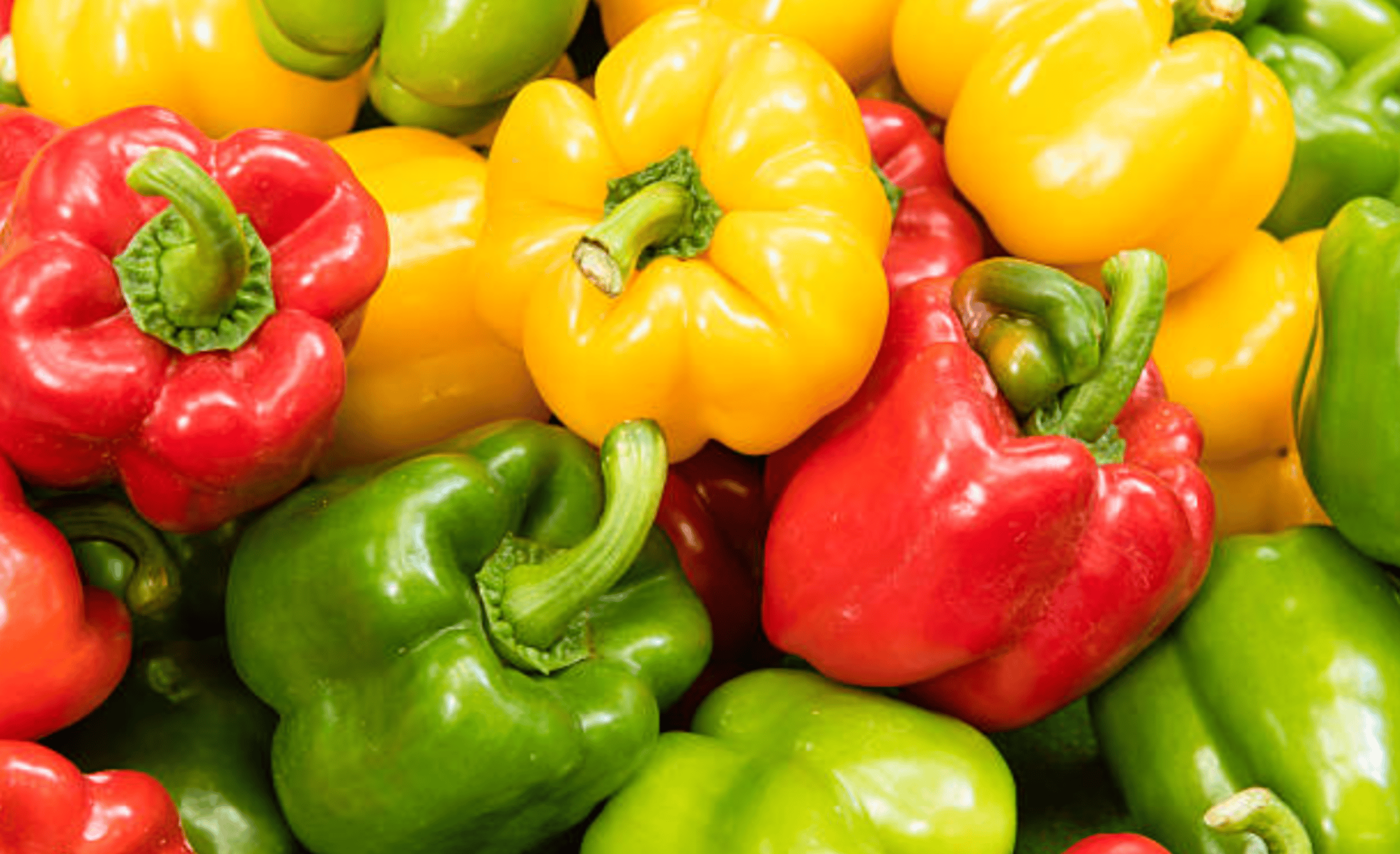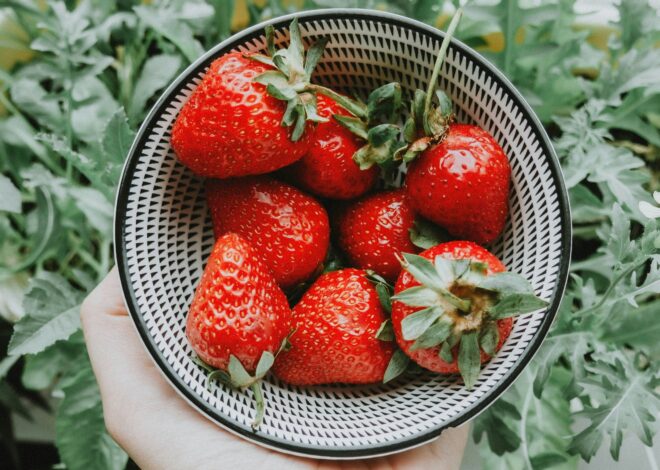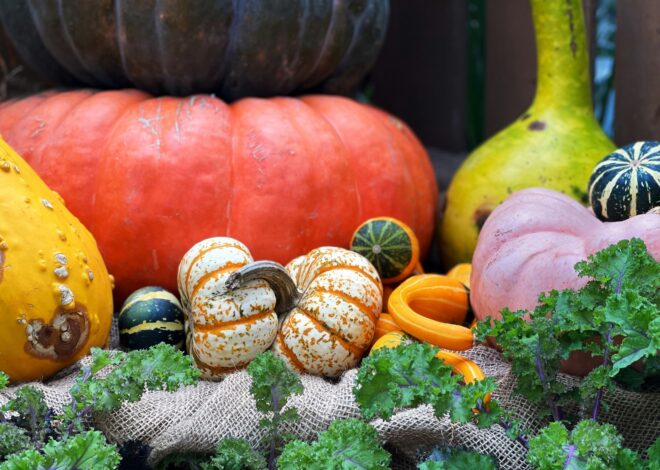
How To Grow Bell Pepper Plants
Let’s dig into the essentials of how to grow bell pepper plants and turn your gardening dreams into reality! Are you ready to embark on a colorful journey in your garden? Growing bell pepper plants not only adds vibrant hues to your outdoor space but also offers a rewarding experience. These sweet, crunchy fruits are perfect for salads, stir-fries, and snacks.
Plus, there’s something satisfying about picking fresh produce right from your own backyard. Whether you’re an experienced gardener or just starting out, growing bell peppers can be fun and fulfilling. With the right knowledge and techniques, you’ll soon find yourself enjoying the crisp taste of homegrown peppers.
The Benefits of Growing Your Own Bell Pepper Plants
Growing your own bell pepper plants offers a delightful journey into gardening. The vibrant colors and crisp textures enhance any garden space. Homegrown bell peppers are packed with nutrients. They provide vitamins A and C, which support overall health.
When you pick them fresh, they’re bursting with flavor that store-bought options often lack. Another benefit is the satisfaction of nurturing something from seed to harvest. It’s rewarding to watch those tiny seeds sprout into lush plants filled with glossy peppers.
You also gain control over what goes on your plants. No pesticides or harmful chemicals mean safer produce for you and your family. Plus, growing bell peppers can save money at the grocery store over time. With just a few plants, you’ll have an abundance ready for harvest throughout the season!
Choosing the Right Location for Your Bell Pepper Plants
Choosing the right location for your bell pepper plants is crucial for a bountiful harvest. These vibrant vegetables thrive in full sunlight, so look for a spot that receives at least six to eight hours of direct sun each day.
Consider the temperature as well. Bell peppers prefer warm conditions, ideally between 70°F and 85°F (21°C to 29°C). Avoid areas prone to frost or cold drafts, as this can stunt their growth. Good drainage is another key factor. Ensure that the soil does not become waterlogged; too much moisture can lead to root rot.
Raised beds or containers with holes can help maintain proper drainage. Think about accessibility. Position your plants where you’ll easily reach them for regular care and harvesting. A little planning now will reward you with delicious peppers later!
Preparing the Soil for Planting
Preparing the soil properly is essential for growing healthy bell pepper plants. Start by choosing a well-draining location that receives plenty of sunlight. Bell peppers thrive in loamy, nutrient-rich soil. Begin by clearing the area of weeds, rocks, and debris.
This creates an ideal environment for your seedlings or seeds to flourish. Next, loosen the soil using a garden fork or tiller to improve aeration and drainage. Aim for a depth of about 12 inches to allow roots ample room to grow. Incorporate organic matter like compost or aged manure into the soil.
This enriches it with vital nutrients while enhancing its structure. Test the pH level of your soil; bell peppers prefer slightly acidic conditions between 6.0 and 6.8. Adjust accordingly with lime or sulfur if needed before planting begins.
Planting Techniques:
When it comes to planting bell peppers, you have two main options: seeds and seedlings. Each method has its own advantages.
– Seeds
Starting your bell pepper plants from seeds can be an incredibly rewarding experience. It gives you the chance to choose specific varieties and control their growing conditions right from the start.
Begin by selecting high-quality seeds, ideally suited for your climate. You’ll find numerous options ranging from sweet to spicy peppers, each with distinct colors and flavors.
Plant your seeds indoors about 8-10 weeks before the last frost date in your area. Use seed trays filled with a light potting mix that drains well. Sow the seeds about half an inch deep, then water gently to keep the soil moist but not soggy.
Ensure you provide plenty of warmth and sunlight as they germinate. A sunny windowsill or grow lights works wonders for young seedlings. Once they develop strong roots and mature leaves, they’re ready to transition outside!
– Seedlings
Starting bell pepper plants from seedlings is a rewarding approach. Seedlings are young plants that give you a head start on the growing season. You can purchase them from local nurseries or garden centers.
When choosing seedlings, look for healthy plants with vibrant green leaves and sturdy stems. Avoid those with yellowing leaves or signs of disease.
Transplant your seedlings when they reach about 4 to 6 inches tall. Ensure the danger of frost has passed to protect their delicate nature. Gently remove them from their containers, being careful not to damage the roots.
Place each seedling in well-prepared soil at least 18 inches apart to allow airflow and growth room. Water thoroughly after planting to help establish strong roots quickly.
Keep an eye on your seedlings as they adapt to their new environment; they’ll thrive with proper care and attention.
Caring for Your Bell Pepper Plants: Watering, Fertilizing, and Pest Control
Maintaining this routine will keep your bell pepper plants vibrant and fruitful throughout their growing season.
Caring for Your Bell Pepper Plants:
Maintaining this routine will keep your bell pepper plants vibrant and fruitful throughout their growing season.
– Watering
Watering your bell pepper plants is crucial for their growth and productivity. These vibrant vegetables thrive in well-drained soil that retains moisture without becoming soggy.
Aim to water deeply but infrequently. This encourages the roots to grow deeper, making them more resilient during dry spells. Generally, a good rule of thumb is about one inch of water per week.
Observe the plants closely; they’ll tell you when they’re thirsty. Droopy leaves or dry soil are signs that it’s time to give them a drink. Early mornings are ideal for watering, allowing excess moisture to evaporate throughout the day.
Avoid wetting the foliage as much as possible since this can lead to fungal diseases. Instead, focus on soaking the base of the plant where it matters most—encouraging healthy growth while keeping pests at bay.
– Fertilizing
Fertilizing your bell pepper plants is essential for robust growth and bountiful harvests. Start by choosing a balanced fertilizer that contains equal parts nitrogen, phosphorus, and potassium. This mix supports strong root development while encouraging lush foliage and vibrant fruit.
Apply the fertilizer when planting to give your young plants a solid foundation. As they mature, side-dress with additional nutrients every four to six weeks. This technique involves placing the fertilizer in rows around the plants without disturbing their roots.
Organic options like compost or well-rotted manure are excellent choices. They not only enrich the soil but also improve its structure over time.
Watch for signs of nutrient deficiency, such as yellowing leaves or stunted growth. Adjust your fertilization routine accordingly to ensure healthy peppers throughout the growing season.
– Pest Control
Pest control is essential for maintaining healthy bell pepper plants. These vibrant vegetables can attract a range of pests, including aphids, spider mites, and whiteflies. Identifying these intruders early can save your crop from significant damage.
Using organic methods is often effective and safe for both plants and the environment. Neem oil or insecticidal soap are popular choices that target pests without harming beneficial insects. Applying these treatments in the early morning or late afternoon minimizes plant stress.
Encouraging natural predators like ladybugs can also help keep pest populations in check. Setting up habitats such as flowering plants nearby attracts them to your garden naturally.
Regularly inspecting your plants will allow you to catch any infestations before they escalate. Look under leaves and on stems where pests tend to hide. A proactive approach ensures robust growth and bountiful harvests throughout the season.
Understanding Bell Pepper Plant Care and Maintenance
Understanding the care and maintenance of bell pepper plants is essential for a fruitful harvest. These vibrant vegetables thrive in warm weather, so maintaining the right temperature is vital. Ideally, they enjoy temperatures between 70°F and 85°F. Regular watering plays a significant role in keeping your bell peppers healthy.
Aim to water them deeply but infrequently, allowing the soil to dry out slightly between sessions. This encourages strong root development. Fertilizing should be done with a balanced fertilizer every four to six weeks during their growing season. Too much nitrogen can lead to lush foliage but fewer fruits; balance is key.
Also, keep an eye on plant structure as they grow taller. Supporting them with stakes or cages can prevent breakage from wind or fruit weight while increasing air circulation around the leaves, which helps reduce disease risks over time.
Common Pests and Diseases and How to Prevent Them
Bell pepper plants can fall victim to various pests and diseases that threaten their health. Aphids are tiny, sap-sucking insects that may cluster on the undersides of leaves, weakening your plants. Regularly inspect your peppers and consider introducing ladybugs to help manage these pests naturally.
Another common issue is powdery mildew, a fungal disease that appears as white spots on leaves. To prevent this, ensure good air circulation around your plants by spacing them properly and avoiding overhead watering. Keep an eye out for spider mites too.
These minuscule creatures thrive in dry conditions and can cause significant damage if left unchecked. A simple spray of water can dislodge them before they multiply. Regular monitoring is key to early pest detection. Maintaining a healthy garden environment will go a long way in preventing both pests and diseases from taking hold of your bell pepper plants.
Troubleshooting Common Issues with Bell Pepper Plants
Bell pepper plants can face various challenges throughout their growing season. Yellowing leaves often signal a nutrient deficiency, particularly nitrogen or magnesium. Adjusting your fertilization routine can help restore vibrant greenery. If you’re noticing stunted growth or wilting, check for root rot caused by overwatering.
Ensure proper drainage in your pots and allow the soil to dry between watering sessions. Blossoms dropping prematurely might be due to temperature fluctuations or stress from inconsistent watering. Aim to keep conditions stable; bell peppers thrive in warmth but need consistent moisture.
Pests like aphids and spider mites are common nuisances. Regularly inspect the undersides of leaves and consider introducing beneficial insects like ladybugs for natural pest control. Keep an eye out for signs of disease such as powdery mildew or black spots on fruit. Maintaining good air circulation around plants can minimize these issues significantly.
Harvesting and Storing Your Bell Peppers
Timing is crucial when it comes to harvesting bell peppers. They typically reach maturity around 70 to 90 days after planting. Look for vibrant color in the fruit and a firm texture. Harvest them when they are still shiny; this indicates freshness.
Use sharp scissors or garden shears to cut the stem, leaving a small portion attached to the pepper. Avoid pulling them off by hand as this can damage the plant. Once harvested, store your bell peppers in a cool, dry place or refrigerate them for longer shelf life.
Placing them in perforated plastic bags helps maintain moisture while preventing spoilage. If you have an abundance of peppers, consider freezing some for later use. Blanching before freezing preserves their flavor and nutrients nicely, making your homegrown bounty last even longer!
Delicious Recipes Using Freshly Grown Bell Peppers
Freshly grown bell peppers are a vibrant addition to countless dishes. Their sweetness and crunch can elevate a simple meal. Stuffed bell peppers make for an impressive dish. Fill them with quinoa, black beans, and cheese for a hearty vegetarian option. Bake until tender and enjoy the explosion of flavors.
For something quick, try sautéing sliced bell peppers with onions and garlic. Toss them into tacos or serve as a colorful topping on grilled meats. A refreshing salad featuring diced bell peppers mixed with cucumbers, tomatoes, and feta is perfect for summer days. Drizzle olive oil and lemon juice over it for added zing.
Don’t forget about roasting! Caramelized roasted bell peppers can enhance pasta dishes or be spread on toasted bread as an appetizer. Experimenting with freshly picked bell peppers opens doors to creativity in your kitchen while showcasing their delightful taste.
Tips for Extending the Growing Season
To extend the growing season for your bell pepper plants, consider using row covers. These lightweight fabrics trap heat and protect young plants from unexpected frosts. Starting seeds indoors can also give you a head start. Plant them 8-10 weeks before the last frost date in your area, then transplant once conditions are optimal.
Another effective method is to use cloches or mini greenhouses. They create a warm microclimate around each plant, promoting growth even on cooler nights. Mulching is essential as well; it helps retain soil moisture and regulates temperature. A thick layer of organic mulch can make all the difference.
Choose late-maturing varieties suited for longer seasons. Look for hybrids that thrive in warmer climates or have been bred specifically to withstand colder temperatures later in the year.
Conclusion: Enjoy Homegrown Bell Peppers All Year Round
Growing bell pepper plants brings joy and satisfaction. The colorful fruits add beauty to your garden while providing delicious flavors for your meals. With the right conditions, care, and attention, you can enjoy a bountiful harvest.
By following proper planting techniques and maintaining your plants through watering, fertilizing, and pest control, you’ll set yourself up for success. Address common issues as they arise to keep your plants healthy.
When it’s time to harvest those bright peppers, savor their freshness in various recipes that highlight their sweet crunch. Extend the growing season with some helpful tips so you can relish homegrown goodness even longer.
Embrace the journey of gardening. Your efforts will reward you with vibrant bell peppers throughout the year!



